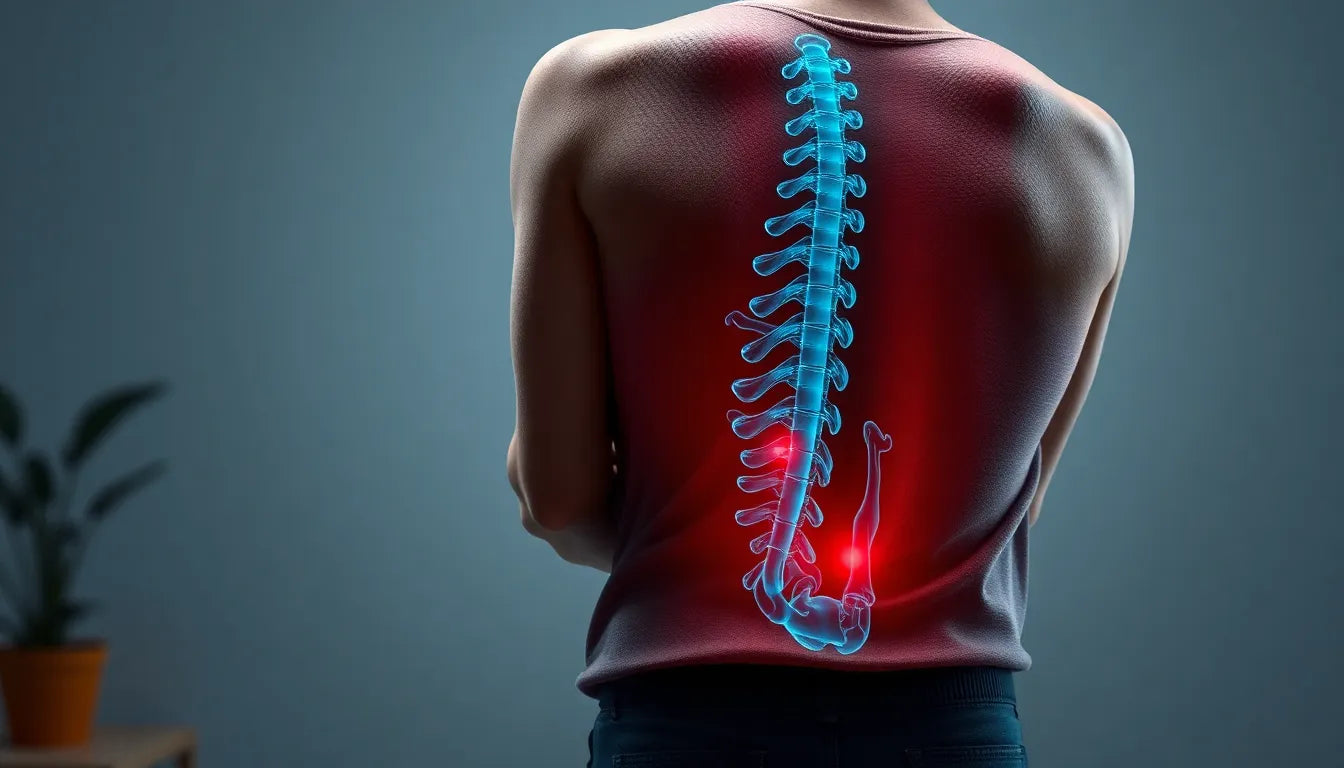Understanding the intricacies of a herniated disc is crucial for anyone experiencing back pain. A herniated disc occurs when the soft center of a spinal disc pushes through a crack in the tougher exterior casing. This condition can lead to significant discomfort, including sharp pain, numbness, or weakness in an arm or leg, depending on the location of the herniation. Effective pain management is essential, as the discomfort can severely impact daily activities and overall quality of life.
the role of temperature therapy in pain management
One non-invasive method gaining attention for managing herniated disc pain is temperature therapy. This involves the strategic use of heat and cold to alleviate symptoms. Heat and cold therapies are accessible, cost-effective, and can be easily administered at home, making them an attractive option for those seeking relief without medication or surgery.
Temperature therapy works on the principle that different temperatures can influence the body's response to pain and inflammation. Cold therapy, or cryotherapy, is typically used to reduce inflammation and numb sharp pain, making it particularly effective for acute injuries. On the other hand, heat therapy helps relax muscles, improve flexibility, and increase blood flow, which can be beneficial for chronic pain or muscle stiffness associated with a herniated disc.
heat or cold: the ongoing debate
The debate over whether heat or cold is more effective for herniated disc relief is ongoing. Some practitioners advocate for starting with cold therapy immediately after the onset of pain to combat inflammation. Others suggest that transitioning to heat therapy after the initial 24 to 48 hours can provide additional relief by relaxing the muscles and promoting healing. This discussion highlights the importance of understanding both methods, as each has its unique benefits and applications.
As we delve deeper into the specifics of each therapy, it becomes clear that the choice between heat and cold is not necessarily a matter of one being better than the other. Instead, it often depends on the individual's symptoms, the stage of their condition, and personal preference. By exploring both options, individuals can make informed decisions about their pain management strategies, potentially incorporating a combination of therapies to achieve optimal results.
initial use of cold therapy for herniated disc
Cold therapy, also known as cryotherapy, is often the first line of defense when managing a herniated disc. This approach is particularly effective in the initial stages of pain, where inflammation is most prominent. The application of cold helps constrict blood vessels, leading to a reduction in swelling and inflammation. Additionally, the numbing effect of cold therapy can provide immediate relief from sharp, acute pain, making it a preferred choice for many healthcare professionals.
Experts like Dr. Neubardt and Dr. Stern recommend using ice packs during the first 24 to 48 hours after the onset of pain. This timeframe is crucial as it targets the inflammation that typically accompanies a herniated disc injury. To maximize the benefits of cold therapy, it's important to apply ice in 20-minute intervals, ensuring there is a protective barrier, such as a cloth, between the ice and the skin to prevent frostbite.
transitioning to heat therapy for chronic relief
Once the initial inflammation subsides, usually after the first 48 hours, heat therapy becomes an effective tool for managing chronic pain associated with herniated discs. Heat therapy works by dilating blood vessels, which increases blood flow to the affected area. This enhanced circulation helps relax tight muscles, reduces stiffness, and promotes healing by delivering essential nutrients to the damaged tissues.
There are several methods to apply heat therapy, each offering unique benefits. Warm baths can provide full-body relaxation, while heating pads and heat wraps offer targeted relief to specific areas. The choice of method often depends on personal preference and the specific needs of the individual. It's essential, however, to monitor the temperature to avoid burns, and heat should be applied for no more than 20 to 30 minutes at a time.
alternating between heat and cold for personalized relief
For many individuals, a combination of heat and cold therapy provides the most comprehensive relief from herniated disc pain. This approach allows for a tailored pain management strategy that can be adjusted based on personal comfort and the body's response to each therapy. Alternating between cold and heat can address both inflammation and muscle tension, offering a balanced approach to pain relief.
A practical strategy involves starting with cold therapy to reduce inflammation and numb acute pain, followed by heat therapy to relax muscles and improve flexibility. This cycle can be repeated as necessary, with adjustments made based on the individual's response to each treatment. It's important to listen to your body and consult with healthcare professionals to determine the best approach for your specific condition.
In conclusion, understanding the benefits and applications of both heat and cold therapy can empower individuals to make informed decisions about managing herniated disc pain. By utilizing these non-invasive methods, many find significant relief, allowing them to regain mobility and improve their quality of life. Always remember to consult with healthcare providers to ensure these therapies are appropriate for your specific situation and to avoid any potential risks associated with improper use.

Lumbar support belt
Adjustable back support belt for relief and stabilization during activities or rest.
Dietary and exercise strategies for managing herniated disc pain
In addition to temperature therapy, dietary and exercise modifications can play a significant role in managing herniated disc pain. Incorporating anti-inflammatory foods into your diet can help reduce overall inflammation in the body, potentially easing pain symptoms. Foods rich in omega-3 fatty acids, such as salmon and walnuts, along with leafy greens and berries, are excellent choices for an anti-inflammatory diet.
Exercise is another crucial component of a comprehensive pain management strategy. Gentle exercises, such as stretching and low-impact activities like walking or swimming, can improve circulation and reduce pain. These activities help maintain flexibility and strength, which are essential for supporting the spine and reducing the risk of further injury. Always consult with a healthcare professional before starting any new exercise regimen to ensure it's appropriate for your condition.

Men's Posture Shirt™ - Black
Patented shirt that stimulates muscles for improved posture and potential pain relief.
Conclusion
By understanding and utilizing both temperature therapy and lifestyle modifications, individuals can create a holistic approach to managing herniated disc pain. Cold therapy is ideal for acute pain and inflammation, while heat therapy helps with chronic pain and muscle relaxation. When combined with a healthy diet and regular exercise, these strategies can significantly improve quality of life and mobility.
Frequently Asked Questions
How long should I use cold therapy after a herniated disc injury?
Typically, cold therapy is recommended for the first 24 to 48 hours following the onset of pain. This period is crucial for reducing inflammation and numbing acute pain.
When is it appropriate to switch to heat therapy?
Heat therapy can be introduced after the initial 48-hour period of cold therapy or once the inflammation has subsided. It's beneficial for relaxing muscles and improving flexibility.
Can I use both heat and cold therapy on the same day?
Yes, alternating between heat and cold can be effective. Start with cold therapy to reduce inflammation, then use heat therapy to relax muscles. This approach allows for a personalized pain management strategy.
What are some signs that I should stop using a specific therapy?
Discomfort, increased pain, or skin irritation are signs to discontinue the use of a specific therapy. If these symptoms occur, consult a healthcare professional for further guidance.
Are there any risks associated with temperature therapy?
Risks include skin burns or frostbite if applied improperly. Always use a barrier, such as a cloth, between the skin and the ice or heat source, and follow recommended time limits to ensure safety.
By following these guidelines and consulting with healthcare professionals, individuals can effectively manage herniated disc pain and enhance their overall well-being.
Källor
- Florida Surgery Consultants. "Herniated Disc Treatment."
- YouTube. "Herniated Disc Treatment Options."
- Cervical Herniated Disc. "Ice and Heat Therapy for Herniated Discs."
- Sciatica.com. "11 Treatment Options for Herniated Discs."
- Palm Beach Orthopaedic Institute. "Bulging Disc."
- Spine Institute of North America. "Best Ways to Alleviate Herniated Disc Pain."
- Spine-Health. "Should I Use Ice or Heat for My Lower Back Pain?"
- Spine.md. "Ice or Heat for Lower Back Pain."
- My Back My Life. "Five Tips for Lumbar Herniated Disc Pain Relief."


















